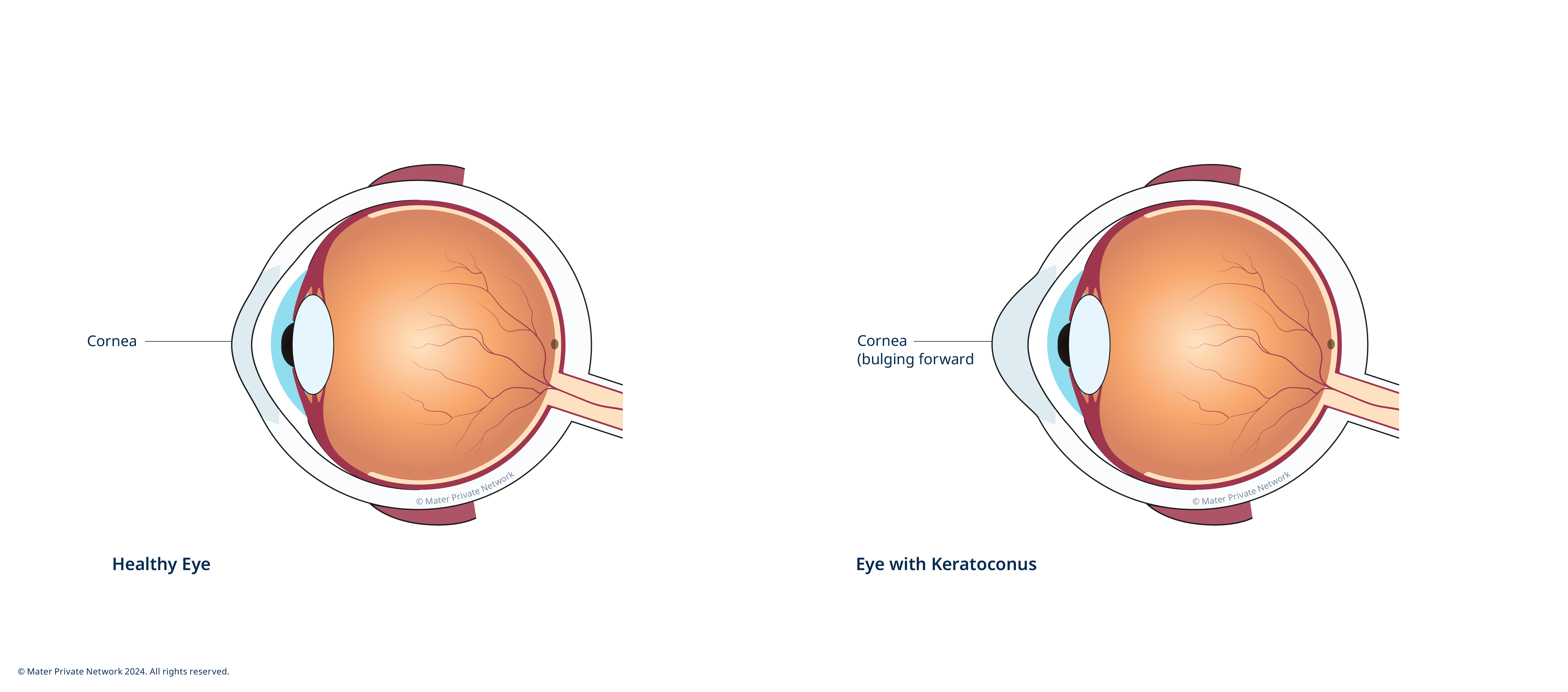Keratoconus
What is keratoconus?
Keratoconus is a progressive condition that leads to gradual thinning and bulging forward of the cornea.
Doctors often explain keratoconus to the patient as the front of the eye becoming shaped more like a rugby ball, when in fact it should be like a football. This causes your vision to deteriorate and can cause blindness. 
What are the symptoms of keratoconus?
Keratoconus almost always affects both eyes, although very commonly, one eye tends to be significantly worse than the other. The condition tends to begin during the teenage years. During this time, there will usually be a rapid progression of the condition, which will continue right up to the late 30's, after which it should finally stabilise.
As the corneal bulging increases, patients typically become more short sighted and develop more astigmatism (deviation from the normal curvature of the eye) leading to worse vision even with glasses.
How is keratoconus treated?
Corneal cross linking
Prevention is better than cure and corneal collagen cross linking (CXL) is now considered an effective treatment to stop the progression of keratoconus.
Unfortunately, if the condition isn’t treated at an early stage with corneal cross linking, patients are left with an abnormal shaped cornea that may require corneal transplantation.
There is now a huge body of evidence in medical literature validating its efficacy. This treatment is most beneficial when done early before the shape of the cornea becomes very abnormal.









